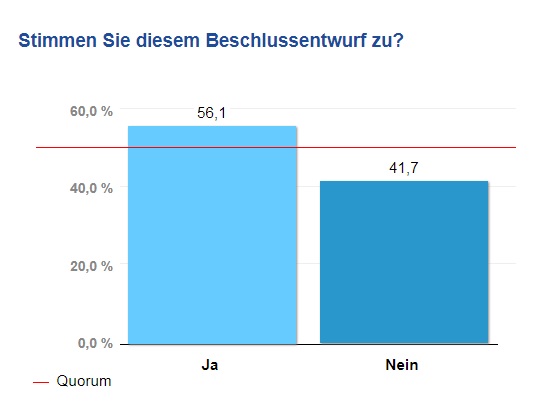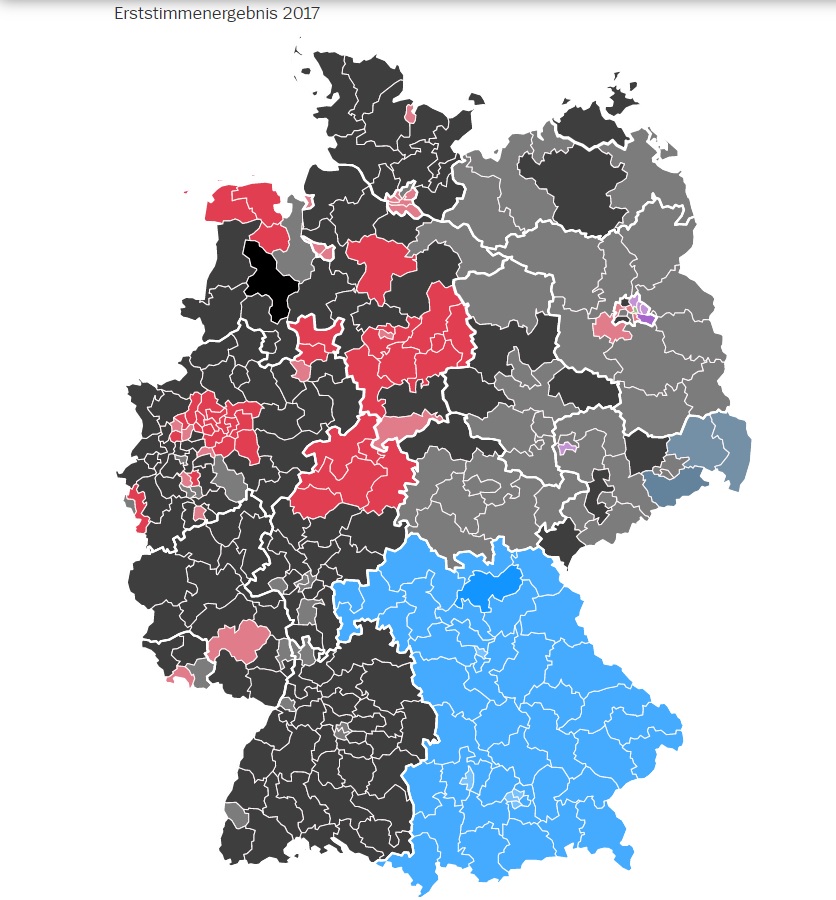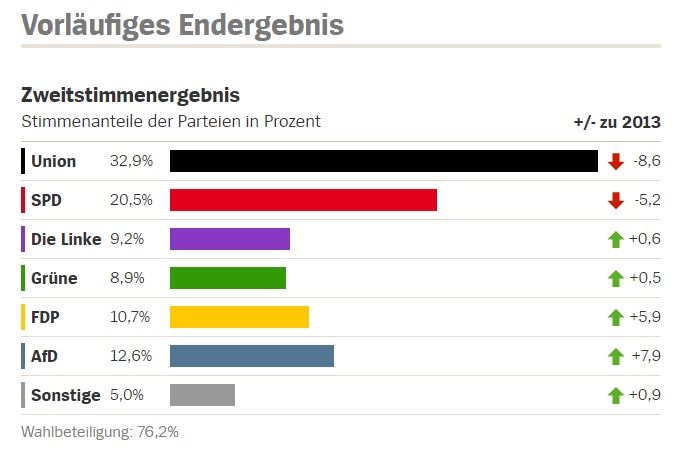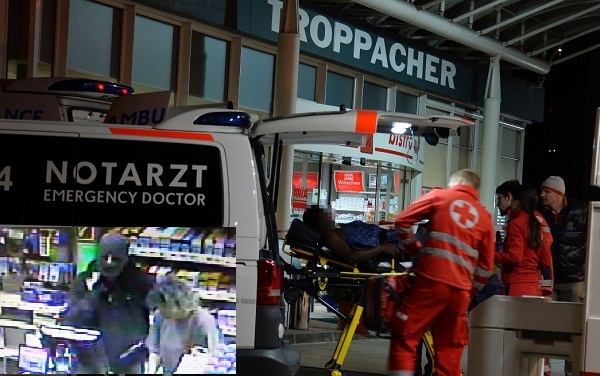
Kwani jana kulienda aje? If you’re still wondering, here’s a recap.
Yesterday was election day in DE. 61,5 Million people in Germany were called out to come and vote, 3 Million were first time voters from 299 constituencies (Wahlkreisen). There were 4828 candidates, representing 42 political parties.
Contents
The process
Usually the election requires the electorate to give to votes. The first vote is the “Erststimme” that chooses an individual to represent the area you live in and the second vote “Zweitstimme”, where you choose the party you’d like to represent you at the Bundestag. Those that win the Erststimme get a direct entry into the Bundestag thus are named the “Direktkandidaten“. A party is only allowed into the Bundestag if it receives more than 5% of the Zweitstimme vote or at least 3 direct candidates.
Each party has a specific list of candidates that would join the Bundestag if the party wins the Zweitstimme. It is therefore possible to have an individual lose the direct election, but still get into the Bundestag because their party won the Zweitstimme. If a party wins more than direct candidates than the number of seats they win through the Zweitstimme, then we get “Überhangmandate“.
Volksentscheid Tegel: To Keep or do Away with Tegel?
Berlin this time had a third vote, and that was the vote regarding the Tegel airport. The electorate was required to choose whether or not to keep the former West Berlin airport. The majority 56.1% chose to keep the airport. However, this does not mean the airport will be kept. The Bundestag might choose against it.

Representation in the Bundestag
This will be the largest Bundestag in German history with 709 members. The previously largest Bundestag was that of 1994 that had 672 members. The last Bundestag had 631. The required number is usually 598, but tends to increase due to affirmative action.
AfD will be in the Bundestag with 94 members, among them Frauke Petry. Remember the one that said that refugees should be shot at the border? Yap, she just got into parliament as a direct candidate.

Possible coalitions:
- CDU/CSU – SPD: the same coalition we have now would be the easiest to form according to the numbers but SPD on the eve of the elections had already declined to join government, if CDU/CSU wins the majority. This coalition would have a 53.4% majority in parliament.
- Jamaica Coalition (CDU/CSU- FDP – Grünen) – this coalition would form 52,5% majority in parliament.











